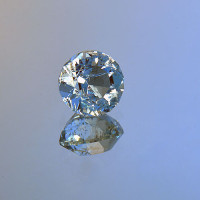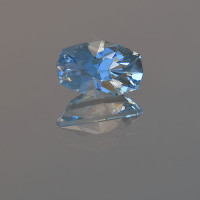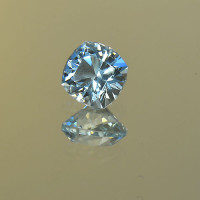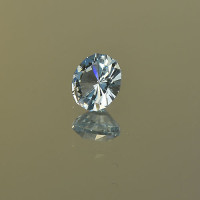Aquamarine
Aquamarine
Aquamarine is a blue to green-blue variety of precious beryl. The beryl group of minerals is most famous for chromium-rich, green emerald, which happens to be one of the 'Precious Four' gems of the world (diamond, sapphire and ruby are the remaining three). Aquamarine is one of the official birthstones for those born in March. Aquamarine is exceptionally hard and has an outstanding glass-like luster. It is most famous for its breathtaking sea-blue colors which can range from light blue to dark blue. The name 'Aquamarine' was derived from an old Latin expression which meant 'seawater'.
Aquamarine and emerald belong to the same family, but they are surprisingly different. Aquamarine and emerald are both beryllium aluminum silicates. While emerald is colored by trace amounts of chromium (and vanadium), Aquamarine color is the result of iron impurities within colorless beryl crystal. Aquamarine and emerald have essentially the same specific gravity and refractive index, but emerald tends to be hazy and full of inclusions, while Aquamarine has excellent transparency and clarity. Aquamarine, and other types of beryl, are quite durable and hard, ranging from 7.5 to 8 on Mohs scale of mineral hardness. A dark and deeply-saturated blue is the most desirable and valuable Aquamarine color. Other varieties of beryl include Morganite, Goshenite, Golden Beryl (Heliodor), Green Beryl and Bixbite.
Aquamarine Color
Like seawater, aquamarine comes in light blue, dark blue, blue-green and green-blue color. The more saturated the color, the higher the value, although almost all aquamarine is typically a lighter blue tone. A deeply saturated blue is the most desirable color, but it is very rare in larger specimens. The intensity of color is one of the most important criteria when evaluating colored gemstones, but unlike other gems, aquamarine is not diminished by lesser intensity of color; many people actually prefer the more crystal-clear lighter gemstones over the richer, deeper colors.
Aquamarine Clarity and Luster
Aquamarines of the best quality are clear, transparent gems. Some gems can carry inclusions of long, hollow rods, a trademark of the beryl family. Aligned traces of foreign minerals, a rare feature, cause a cat's eye effect or star effect (asterism) with six rays in a vivid sheen. Cat's eye aquamarine usually command premium prices. Six-rayed specimens with asterism effect or 'star aquamarine' is exceptionally rare and very valuable. Aquamarine has a vitreous and glass-like luster when cut.
Aquamarine Cut and Shape
Aquamarine is available in both faceted and cabochon cuts. Beryl's are particularly well-suited for rectangular or square cuts. The most favored cut for Aquamarine is an emerald step-cut. Brilliant cuts with long or rectangular shapes are also very popular. Turbid and chatoyant specimens are cut en cabochon, as well as cat's eye and star aquamarine specimens. Skilled gem cutters can facet any shape imaginable with Aquamarine beryl. The most common cuts are traditional shapes such as round, pear, oval and cushion. Fancy cuts are difficult to find in larger sizes. Aquamarine and other types of beryl are sometimes carved into ornamental figures and animal gemstone carvings.
Aquamarine Treatment
Aquamarine is often heat-treated for color enhancement, but many are untreated. Heating at low temperatures will reduce unwanted green and yellowish tones. Darker shades of aquamarine are almost always heated, as well as lower quality stones (Usually at 725-850F or 400-450C) in order to enhance the color into a favorable blue color. Heating at higher temperatures would result in discoloration.






